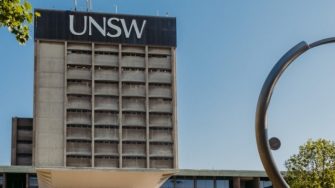
We’re proud of all our UNSW School of Civil and Environmental Engineering graduates and enjoy showcasing their achievements. Read about some of our notable alumni:
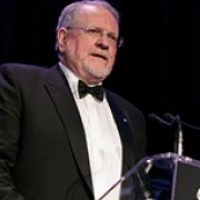
Robert Care
Dr Robert Care, AM
BE Civil (Hons 1) 1973, PhD 1978
Former Principal at Arup Group, Canberra
Awards: Order of Australia AM - Awarded in 2012 for contribution to Engineering, Business, Humanitarian Programs and Athletics
UNSW International Alumni of the Year Award 2013
Professional Engineer of the Year 2014 - Engineers Australia
Why did you choose civil engineering?
I actually wanted to be a high school maths teacher but I was advised to study engineering to keep my career options open. Funny how things work out.
What I enjoyed most was the study, the dedication to an end. What I enjoyed least – Soil mechanics and statistics. I remember looking at the final Soil Mechanics paper with a sinking heart … and then seeing the way out. I bamboozled my way through by trotting out my knowledge of finite differences for a flow net calculation, and ended up with a high mark that I am not sure I deserved.
I will never forget, my PhD supervisors Al Kabaila and Ray Lawther, and Ray’s MGTC, Ken Faulkes and Bob Warner, great lecturers and Stan Hall, a benevolent HoS.
Career Highlights to date: The Wandoo B Full Field development– a project Alliance – the first in Australia: leading the forensic recovery team into the Hatfield Rail crash in Britain in 2000: working as Chief Engineer at the National Capital Development Commission – a great organisation: joining the global Arup Group Board and from 2004 leading Arup Australasia during a great period of our development.
Upon reflection I was at the School for almost eight years, learned a lot, and I graduated with two excellent degrees. I enjoyed myself, made many friends including one group that has met annually for the last thirty something years. A great School, a great reputation, and a lot to be thankful for.
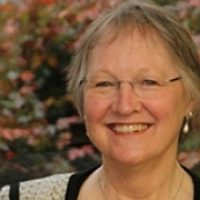
Elizabeth Taylor
Em Prof Elizabeth Taylor, AO
BE Civil ‘78
Chair, RedR Australia
Structural engineer, engineering academic, humanitarian engineer.
Previous roles included Pro-Vice Chancellor and Executive Dean, Sciences, Engineering & Health at University of Central Queensland
Awarded the Order of Australia in 2004 for her services to engineering education, and for enhancing the status of women in engineering.
While a student I enjoyed the hands-on engineering such as making concrete, and the survey camp at Richmond. Project based aspects such as the “Footpath Foreman” activity in first year. In this activity each student was required to find a construction site and, with the permission of the foreman, follow and document progress over the six months of term, write a report and give a presentation to the class. I also enjoyed playing cards in the “Blue Room” in later years.
I did not enjoy the isolation and lack of support. I was not assertive, and the boys did not speak to me for the first year. Upon reflection I feel that it was an unconscious rather than an active exclusion. UNSW at that time reflected the norm culturally. What perhaps is sad is that universities generally reflect rather than challenge prevailing social norms.
Career Highlights: As a professional engineer: construction and contracts engineering on site around Sydney Harbour. As an academic: in collaboration with wonderful colleagues who are passionate about their area of expertise, integrating curriculum and support for students while extending the boundaries of our understanding of our professionalism. I am privileged to have been a part of the movement that made some shift to greater inclusivity within universities, and a member of groups such as AAEE (Australasian Assoc for Engineering Education) and the Women in Engineering Units who were critical change agencies.

Ian McIntyre
Ian McIntyre, Chair, CVEN Industry Advisory Committee
BE Hons 1 ’74
Principal and Service Lead, Contractual Services, Advisian
School Memories: I have always felt a debt to David Howell for the General Systems Thinking perspective that I have utilised to good effect ever since. The ability to use the General Systems paradigm to structure a sensible formulation of new fields, issues and problems has been a recurring theme throughout my career. I also clearly remember the ease with which Professor Valentine made the study of Hydraulics simple and straightforward and I have sought to emulate his explanatory ability ever since.
Career Rewards: I have never regretted my choice of Civil Engineering as a career. I was the third person in Evans & Peck (now Advisian) and I have found its development and maturing over the years to be very satisfying, particularly in regard to the high calibre of people we have attracted into the business, especially the excellent and bright “twenty somethings” who will lead the organisation in the future. Individuals can achieve little except as part of teams and I have found the membership and leadership of project teams that genuinely operate as integrated teams to be very rewarding and satisfying. Engineering is, above all else, a people business.

Mehreen Faruqi
MEngSc ’94, PhD ’00
Greens Member Of the NSW Legislative Council
‘Civil Engineers can do anything and everything!’ I can remember my Dad, also a civil engineer, repeating this line quite often.
School memories: I did my post graduate study (Master and PhD) in environmental engineering. We had an amazing cohort of research students from all over the world. The professional and social networks we formed continue to this day. My lecturers, in particular Stephen Moore and Ronnie Harding, are passionate teachers and really inspired me.
Career rewards: I have worked in a variety of organisations including local government, consulting firms and universities. I believe that Engineers today need to take a leading role in delivering current and future human needs, addressing complex environmental challenges such as climate change and ecosystem degradation, while understanding the ‘exquisite interdependence’ of science and technology with business, politics and society. What inspires me most today, are my own students whose diverse views and expertise paves the way for creative and innovative thinking - the only way to lead change.
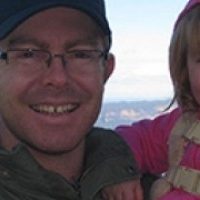
Andrew Johnson
BE Hons ’95
Principal, Sydney Buildings Design Group 1, Arup
School memories: Ray Lawther’s classes were always entertaining…… and whilst (from my perspective!) I didn’t always understand his lectures at the time, I found myself afterwards - in exams and the early years of my professional career - having moments when the light switched on or the penny dropped. Thanks Ray! Ian Gilbert for his knowledge and tireless effort to improve the design of concrete structures. Skipping lectures and tutes to get to the Village Green for cricket training – a small price for a learning-life balance…..
Career rewards: It is an exciting and important time to be an engineer. The associated impacts from climate change and population growth - such as sufficient food and water supply, and necessary changes to the built environment and the way we live today - will require creative and innovative solutions from both today’s and tomorrow’s engineers. The most rewarding moments are always seeing designs realised – in particular those where problems have been solved creatively, collaboratively, and functionally. The most challenging is to maintain the mindset and environment to realise continual innovation and creativity.
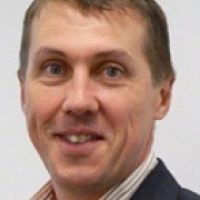
Dr James Glastonbury
PhD Civil Engineering 2002
Engineering Director Laing O’Rourke
Member CVEN Industry Advisory Committee
When James Glastonbury joined the multi-national privately owned engineering firm Laing O’Rourke in early 2013, he knew it wasn’t a typical engineering career move. Rather, he realised it could be considered an engineer’s dream role.
James is a director with the Engineering Excellence Group at Laing O’Rourke, a global team of technical specialists and innovators that seek smarter ways to do things, to challenge traditional practice. He sits in between the ‘blue sky thinkers’ and project teams and brings them together so that the innovations and thoughts can be manifested in real situations.
“The challenge for us in the current economic climate is that infrastructure owners are spending less money on constructing new assets and seeking more from existing assets,” said James. “We offer opportunities that help clients better understand and optimise their assets without increasing their capital spend.” This in turn helps clients plan the design of new assets to be more efficient, saving time and money in the long run.
James relishes the conversations he has with clients about how new ideas and technologies could be integrated into projects to provide greater efficiency. He focuses on innovative engineering solutions that can provide smarter, faster, cheaper and safer delivery, increased quality and improved performance.
Laing O’Rourke was recently listed in the top 10 of the BRW Most Innovative Companies, in part due to some of the ground-breaking work happening within their Engineering Excellence Group. They recently worked on a project to optimise the power supply at remote project sites – which is unreliable at the best of times. They were able to develop a hybrid solar-diesel power system that has had significant operational, commercial and environmental benefits – a massive improvement.
“Laing O’Rourke is an exciting organisation to be part of – there is an inherent appetite to explore and invest in new ideas,” he says. Sometimes the technologies he uses come from completely unrelated industries or are unproven in the construction sector, so the challenge lies in having clients prepared to “go on the journey”, to find a better way.
So where did he begin? James comes from a long line of engineers and, after studying a combined undergraduate degree in civil engineering and geology, it was the Thredbo Landslide in 1997 which led to a PhD in geotechnical engineering at UNSW and really focused his career. He looked at slope behaviour prior to a landslide, and developed slope risk management tools that have been used by various agencies for better managing landslide risk, igniting a passion for innovation which has remained to this day.
James believes that stepping into his role at Laing O’Rourke was like having a second career, and one which he hopes to continue indefinitely. “I love what I do – it’s both exciting and challenging at the same time.”
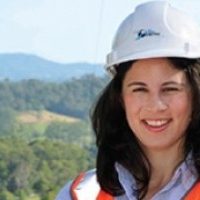
Erin Cini
BE Environmental Hons 2006
Director, Water Licensing & Compliance at IPART
How my degree benefitted me
Environmental engineering at UNSW Australia gave me skills which I would call ‘beyond technical’. So yes, as an engineer I can do the maths and the science, but the most important skills I got from my degree were skills in communication, problem solving, strategic thinking, working in a team and applying the maths and science for positive outcomes. Maths and science alone won’t save the world!
My advice to current or prospective students
Get as much diverse experience as you can both while at university and in the workforce, always learn from what you have done before and wherever possible challenge yourself.
Look for the degree, the project, or the job that you think is most likely to change you, change Australia or change the world.
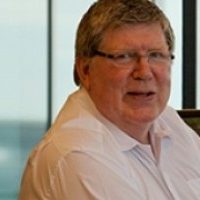
Bruce Munro
BE Hons ‘75
Managing Director, Thiess
Bruce Munro was appointed Thiess Managing Director in September 2011 after joining the Thiess Group in 1986.
A civil engineer with 36 years’ experience in the construction and mining industries in Australia, SouthEast Asia and India, he has held a number of senior positions within the company. These have included President Director of PT Thiess Contractors Indonesia– a roll he held for eight years after his appointment in 1999. He was appointed Executive General Manager Asia August 2007 and in January 2010 he was took on the role of Thiess’ Chief Executive Mining.
He is a Non-Executive Director on the board of Sedgman – a leading provider of minerals processing and associated infrastructure solutions to the global resources industry. Bruce is also on the Boards of the Minerals Council of Australia and Australian Constructors Association and Queensland Chair of the Australia Indonesia Business Council.
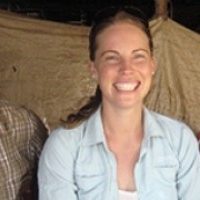
Dr Jaqueline Thomas
BSc/BA (Hons), PhD Civil and Environmental Engineering 2012,
Senior Scientist, Water, Sanitation and Hygiene Research,
Ifakara Health Institute, Ifakara, Morogoro, Tanzania
In the East African country of Tanzania, 9% of all deaths of children aged under 5 occur from diarrhoeal disease in part due to poor water supply and low level sanitation. As a Senior Scientist working for the Ifakara Health Institute in Tanzania, School PhD alumnus Dr Jacqueline Thomas is working on interventions that can make a huge difference to populations not just in Tanzania but around the world.
In Tanzania, water supply is typically taken from shallow open wells, many of which can be easily contaminated by pit latrines. Interventions are a proven means to reduced diarrhoeal disease risk by around a third. Jacquie is researching the effectiveness of household level water and sanitation interventions that could be brought to scale via market demand.
Jacquie and her team are developing an innovative chlorine dosing mechanism for locallymade ceramic filter pots to achieve complete household-level drinking water treatment for low-income communities. But how do you stop this contamination of water supplies in the first place? You need to find an appropriate treatment solution and an end-use for the faecal sludge. Jacquie is currently looking at ways of addressing this.
There are two main issues that direct the research focus. Firstly, there is limited agricultural productivity due to the expense of commercial mineral fertilisers in Tanzania. Secondly, only about 20% of the population is connected to electricity, so most people use charcoal to cook with - which results in rampant deforestation.
“The challenge in developing countries is providing drinking water and safe sanitation,” she says, “using techniques and technologies that people can afford to pay for, that can be locally produced and that are sustainable”.
Dr Thomas worked with a team that developed a rice huskfired furnace to sterilise human waste and recapture nutrients and energy, creating safe biosolids for agricultural reuse. Then, via pyrolysis of dried faecal sludge, biochar brickets can be produced to replace the use of charcoal from virgin forests. The whole system can be operated by local entrepreneurs and will hopefully motivate significant up-take of ecologically sound sanitation.
Jacquie’s greatest challenge has been advocating for change, seeing a problem and a way to address it but having to take on the cultural, economic and political barriers involved to make things happen. However, she hopes that her work will continue to make a difference, and more local communities can benefit from the technology her project has developed.
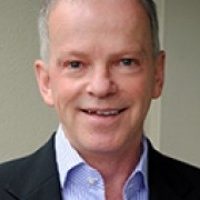
David Carolan
BE Hons ’81, MEngSc ’89
Director, Taylor Thomson Whitting
School memories: Fellow students bonding through working together as teams to complete assignments. Lecturers Ken Faulkes (clear thinking on concrete design and enthusiasm for it); Alex Heaney (how he quizzed us on the shapes of bending moment diagrams and deflected shapes); Ray Lawther (laid back analysis wiz with a cool MG); Peter Kneen (who supervised my Masters project on the analysis of cable structures). Being told in first lecture in Statics that ‘this was the culling subject and 50% of you would fail’. Least liked - statistics lectures. Sneaked off to the Blockhouse and applied my physics & dynamics skills on the snooker table.
UNSW was good at teaching us how to think; how to problem solve which I think is much more important for a uni than just delivering content.
Career rewards: Starting my firm’s first overseas office (in Jakarta) where I caught up again with School lecturers Vir Murti and Peter Kneen. Continuing relationships, personal &
professional, that came from that time overseas. Working with a creative team that turns a sketch on a page into a building. Seeing the fruits of my labour in concrete (literally). I feel very fortunate to still be working in a job where I ‘do’ engineering every day.
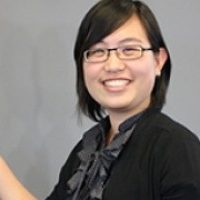
Alice Tjitradjaja
BE Civil with Architecture 2011 University Medallist in Civil Engineering with Architecture
Graduate Engineer - Sydney Buildings Facades - ARUP
Arup are an independent global and multidisciplinary firm of designers,planners, engineers, consultants and technical specialists offering a broad range of professional services.
My job today: The heart of my job is design. It’s not limited to technical/engineering aspects but is also heavily involved in coordination and discussions with architects, builders, contractors and so on. My undergraduate education has better prepared me for design, a constantly evolving and iterative process. The “big picture” approach, often downplayed in engineering education, has turned out to be the most applicable lesson in the workplace.
Why I chose my degree: I was attracted to UNSW’s great reputation in engineering, I enjoyed the teaching and the large variety of subjects. The civil engineering subjects are very relatable and true to life - it made me appreciate the everyday conveniences we take for granted. While allowing us to be practical and analytical in doing the engineering calculations, we could release our creative energy with the architecture subjects. It was great fun. The Design Studios trained students towards a holistic approach to design, from planning, developing ideas, to presentation. There was plenty of time on one-on-one feedback or discussion with tutors on various issues. Other than architectural design, discussion also ranged to include practicality, materials, construction, buildability, and so on.
Most challenging aspect: Time management, especially when juggling engineering assignments with architecture ones, which were often very time-consuming. Prioritising is everything! Future Hopes: I’m just starting out in the industry. It’s exciting, fast-paced, dynamic. I’m hoping to gain valuable experiences and learn what it takes to be a real, capable engineer. I’m also keeping my eyes open for further education in engineering or maybe architecture in the future.
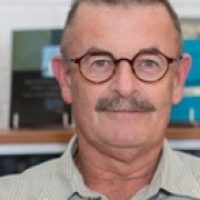
Garry Mostyn
BE Hons 1974, MEngSc 1976
Principal, Pells Sullivan Meynink
Why civil engineering: When I completed the HSC in 1969, a man had just been on the moon. It seemed engineers could do anything. I happened to be very good at maths and physics and my background was that you did what you were good at. I didn’t want to be in an office full time and had a view that civil engineers worked on sites and built big things. That was good enough for me.
Clearest memories of School days: To be frank, I remember excellent academic staff (Professor Ian Lee, Ian Cordery and Ken Faulkes to name a few) and somewhat idle students, myself included. Mid career, I spent 12 rewarding years on the School’s staff. It struck me that the students were much more motivated and focused.
Career rewards and challenges: Two projects with very challenging technical problems are especially memorable: Working with an international team on re-engineering the North Rankin A platform in the early 1980s, and managing to get Burnley Tunnel re-opened in less than a week when the side wall failed in 2000. More recently, I have had to challenge a number of orthodoxies and have managed to take multiple technical reviewers on the journey. Most rewarding? That’s easy. Working with very bright and motivated young engineers.
Engineering challenges of the future: The major challenge facing First World civil engineering is providing new infrastructure in congested urban environments where the local community bears the cost but a more remote (in time and space) community reaps the benefits.

Elise McKenna
BE Surveying and Spatial Information Systems 2009
Hyder Consulting - GIS Analyst
I chose UNSW because of its reputation, especially in engineering. However, the range of programs and assistance provided to new students also made me feel comfortable and at ease with my transition to university.
Spatial information is a field that is industry independent, which means the opportunities are endless. I have always loved to play with technology and this degree also combined my love of maths and the outdoors.
The Surveying and Spatial Information Systems program offered a good mix of theory and practical experience and provided a well-rounded education. Also the strong connection with industry allowed me to hit the ground running once I had completed my degree.
Studying at UNSW not only built the foundations of my technical knowledge, but also developed my problem-solving skills, so that I am able to think outside the box and provide balanced solutions to the challenges I face.
Since graduating, I have been working as a geoinformation systems (GIS) analyst with Hyder Consulting, a multinational engineering design consultancy company. This work includes creating and maintaining online mapping and communication systems so that project teams are able to work in a collaborative and coordinated environment.
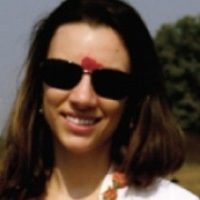
Janet Salem
BE Environmental Hons 2007, MEngSc 2008
Program Officer at UNEP the United Nations Environment Program
UNEP is the voice for the environment in the United Nations system, inspiring, informing, and enabling nations and peoples to improve their quality of life without compromising that of future generations.
Why I chose engineering: I felt that the natural resources we depend on were not being managed well - perhaps not intentionally, but out of lack of the right people and knowledge in the right place. I decided I wanted to study engineering and see what I could contribute to the solution. Very happy to have done so. Having a technical understanding of water supply, waste management, industrial production, transport systems and environmental assessment methods means I can now talk substantively with policy makers and scientific experts about how to achieve environmental goals.
My job today: Day to day my job involves project management: coordinating the research and peer reviews, liaising with governments, fundraising and financial management, developing contracts for procurement, and communications – including organising outreach events. I have just moved from a position in Paris to Bangkok – to focus on policy support to countries in the Asia Pacific region.
How my degree benefitted me: It is great knowing that as an engineer you have the skills to help people and improve the way things work. One need only travel to India to see the transformative effect of a small dam on the farmers’ livelihoods in a water scarce area and the improved access to water for women and children who used to walk to carry it. Or see the health benefits and human dignity afforded by basic sanitation and water treatment. Or the pride of a community once a decent waste management system is in place to clean up their streets.
My advice to current or prospective students: Firstly, find out what really fascinates you and go in that direction. If you enjoy what you do, you will be good at it and people will want to work with you. Secondly, invest in yourself: do internships and keep learning, in addition to and after you finish your studies. Enjoy your time at university, it’s precious time to have fun and make friends you’ll have for life.
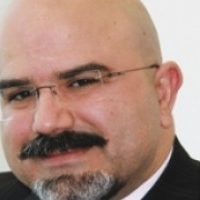
Kourosh Kayvani
MEngSc 1992, PhD 1997
Building Structures Leader & Head of Innovation, Aurecon
Why civil engineering: As a young boy I looked up to my two successful Civil Engineer uncles as role models. That led to me finishing a BSc in Civil Engineering at Tehran University. I developed a strong interest in structural engineering which led me to complete my postgraduate degrees at UNSW as an overseas student. I chose UNSW for the reputation of its academic staff and its diverse research programme. Living in Sydney turned out to be even better than I expected.
Clearest memories of School days: Amongst other things, I recall the supportive academic staff (Dr Ray Lawther, in particular, who was always willing to help with a tricky technical question); conversations with my fellow PhD students that made our studies a less lonely experience; and the view to the south from the sixth level of the Civil Eng building particularly when the planes were landing and taking-off at Sydney Airport in the evening.
Career rewards and challenges: The most rewarding and challenging project of my career has been designing the Arch of Wembley Stadium in London and seeing it get built.
Engineering challenges of the future: Delivering affordable housing and infrastructure to the poorest people on our planet; a sustainable response to the continuing trend of urbanisation in the world; and keeping a long term outlook on infrastructure planning.
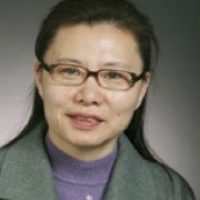
Jing Guan
PhD'99
Chief Scientist and Deputy Director of R&D at Origin Water, Beijing
Jing Guan is chief scientist and deputy director of R&D at one of China’s largest water treatment membrane technology companies, Beijing Origin Water Technology Co (B.O.W.). Already with more than 100 membrane patents, and 1000 completed membrane projects that provide 2 billion tonnes of high-quality reclaimed water a year, it’s a boundless task.
Jing says the company’s main products are PVDF MF/UF membrane and low pressure reverse-osmosis membranes for the treatment of municipal and industrial wastewater, drinking water treatment, domestic tap water purification and seawater desalination. “The company also provides technologies for solid waste and sludge treatment, water engineering construction and water industry investment,” she says. “It also plays an important role in water environment treatment in new rural construction. B.O.W. has made a great contribution to water environment protection in China.”
Formerly a senior research fellow at UNSW’s Centre for Water and Wastewater Technology in the School of Civil and Environmental Engineering, Jing moved back to China and began her current role five years ago. In 1999 she completed her PhD in Environmental Engineering at UNSW.
She says she receives great job satisfaction working with such a strong R&D team in an area of such global concern. “The biggest engineering challenges for my work are how to develop a right, proper technology as well as ensure it is able to apply to solve the water problem.”
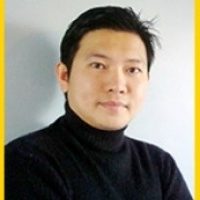
Voo Yen Lei
Be Hons 1 '01, PhD '04
CEO and Executive Director, DURA Technology
Dr Voo Yen Lei has been setting world records in bridge-building. In 2011, the company that he founded and of which he is CEO and Executive Director, DURA Technology, built the world’s longest trafficable bridge using ultra-high performance concrete (UHPC): the Kampung Linsum Bridge in Malaysia. Voo designed, manufactured and built the cutting-edge bridge, which won the Husband Prize from the Institution of Structural Engineers. His company is currently building a 100m single-span bridge using the same technology. He says the breakthrough “followed many years of research and development and close collaboration and fruitful scientific discussion with Professor Stephen Foster (Head of the School of Civil and Environmental Engineering)”.
Voo says that as well as the long spans making the bridge quick to construct, UHPC has environmental benefits. “As a rule of thumb, a UHPC bridge is generally able to give immediate inventory savings of 20–25% in terms of carbon footprint or global warming potential when compared to current design.”
Voo left Sydney in 2003 and spent four years developing the technology, marketing, and dealing with regulators and industry bodies. The company has completed 14 bridges for the Malaysian government, 12 more are under construction and 10 others are under tender. “Almost all our clients have no knowledge about UHPC technology,” he says. “One of the reasons I am still active and teaching lectures at university level [he is adjunct professor for University Putra Malaysia] is because it is the most suitable way to teach UHPC technology.”
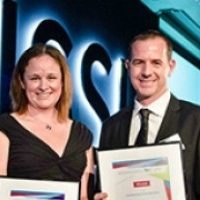
Narelle Underwood
BE Hons 1 Surveying and Spatial Information Systems, ’09
NSW Surveyor-General
Member of the School’s Industry Advisory Committee
On 2 September 2016, NSW Department of Finance, Services and Innovation Secretary, Martin Hoffman, announced the appointment of Narelle Underwood as the NSW Surveyor General.
Mr Hoffman said Ms Underwood brings a wealth of experience, most recently as the Acting Principal Surveyor at NSW Roads and Maritime Services.
“Ms Underwood is a leader in her profession working as an advisor to the Board of Surveying and Spatial Information and Chair of the Surveying Mapping and Industry Council,” said Mr Hoffman. “She has also played a significant role in promoting and developing the survey profession, particularly in the tertiary sector and with young professionals.”
In addition to her considerable personal and professional capabilities, Narelle Underwood also has the distinction of being the first female Surveyor General in Australia.
In her relatively short career to date, Narelle has won a total of nine industry awards for her innovation and commitment to quality outputs, including the Asia-Pacific Spatial Excellence Awards Young Professional of the Year in 2011, which she won from amidst a highly capable international field.
In 2014 the team which Ms Underwood managed won a NSW Excellence in Surveying and Spatial Information Award for the technical innovation and efficiency they displayed during stage 1 of the WestConnex development project. Under Narelle’s management, six teams covering vast geographical areas used the latest mobile laser scanning technology, cutting surveying time by up to 70%. Because of the densely populated urban environment, other technologies such as traditional detail surveying and Terrestrial Laser Scanning (TLS) were also used to enhance the accuracy of MLS-derived data and filling in any apparent gaps.
“Merging new and traditional technologies continues to be one of my greatest joys. Combining data drawn from different sources allows surveys to be much richer and more useful,” she says.
Narelle Underwood is not daunted by the ever changing technological landscape of the surveying industry; she is excited by it. Technological innovation can ensure the expansion of public infrastructure in the future.
In her role with RMS, overseeing surveying projects in the Sydney region, much of her work focused on research and development of better, safer and more accurate outputs. Take as an example mobile laser scanning which, as the name suggests, consists of a device mounted on a vehicle which then moves through the area to be surveyed. The device takes images at up to two million pixels per second, which is an astounding feat and allows surveys to be extremely accurate, often down to ten millimetres. Because of the accuracies involved – projects which may ordinarily have taken over 12 months can now be fully completed in a third of the time.
Narelle is working with two professional bodies (ISNSW and SMIC – of which she is chair) on the NSW Surveying Task Force to encourage more graduates to consider a career in surveying – without whom the construction industry could very well grind to a halt.
“There is a severe shortage of Registered Land Surveyors in Australia so we’re working to lifting the profile of the profession,” she said. “With technology changing so rapidly, we really don’t know what will be happening in five or ten years, what people will need and how data and information will be used. It’s an open book, which makes this profession extremely exciting.”
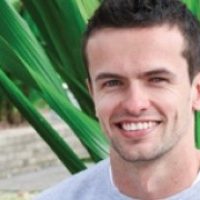
Jamie Ruprecht
BE Civil Hons 2009
Project Engineer
Water Research Laboratory, UNSW Water Research Centre
WRL is a leading international consulting and research laboratory and is a major group within UNSW Australia's Water Research Centre. WRL is unique in housing academic staff alongside a commercial Projects Team. The Projects Team offer commercial services of expert advice to industry and government, while the academic staff carry out research programs and
supervise postgraduate students.
My job today: Since I began at the WRL I have worked in a variety of areas within the water discipline including: physical and numerical modelling, contaminate fate and transport (tracer) studies, estuarine and wetland projects and groundwater quality and monitoring programs. All of the work that I do at the
UNSW Water Research Laboratory is exciting. The Lab is considered the birthplace of coastal engineering in Australia with a highly regarded international reputation in the fields of coastal and ocean engineering.
Why I chose my degree: I first heard about the UNSW Civil program through my Physics teacher in high school and he encouraged me to pursue a career in engineering. UNSW Engineering has a steadfast reputation as being the best in the business and also offered a coastal focus which was one of my interests. I was also offered a 4-year scholarship to study civil engineering at UNSW. Also a BE (civil) degree at UNSW is a good platform to begin a career in engineering particularly when one considers the industry partnerships the Faculty maintains.
The BE civil engineering program provides substantial variety in the courses offered over the five discipline areas – construction and management, geotechnical, structural, transport, and water
engineering - to undergraduate students which gives them the opportunity to find their personal strengths, weaknesses and interests. The high calibre of teaching staff within the faculty not
only provide students with the tools for learning but are also readily available to mentor individual students throughout the degree so that they are ready to face whatever "real-world" challenges come their way in the future.
My advice to prospective students: All I can say is that you will not look back after completing a BE (civil) degree at UNSW. I haven't. If you are dedicated to achieving the goal to become eminent in the field of civil engineering then this program will provide you with the tools and stepping stones in order to do so. Jump in, do the work, but enjoy yourself along the way!
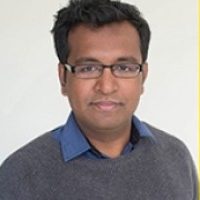
Adnan Sufian
BE Civil Hons 2011
Research Associate
PhD candidate in Imperial College London
“I chose UNSW because it had the best program. It explored all aspects of civil engineering and had a great balance between theory and practice,” says Adnan Sufian, a graduate now working with one of Australia’s leading engineering consultancy.
“I found that the teaching was outstanding and the resources provided by the university were really helpful in my education. Even now, I still bring folders of lecture notes and booklets to work because all the things I studied are applicable to my work.”
Adnan was working as a geotechnical engineer at SMEC Australia, a company with projects all over Australia and internationally.
“I’ve worked on a site investigation project in Gerringong for duplication of the Princes Highway, designed numerous bridge foundations for the Hunter Expressway and even had the chance to work on a project in Vietnam.”
The UNSW School of Civil and Environmental Engineering provides more than 20 scholarships each year to high-school leavers and mid-program students.
“I was lucky enough to receive two scholarships during my time at UNSW, including the Roads & Traffic Authority (RTA) Scholarship for Civil Engineers, which provided me with industrial experience that I found was invaluable when I was applying for jobs,” says Adnan.
“I also received the Elite Student Program Research Scholarship in the third year of my degree. This allowed me to do research into a new technology for fibre reinforcement of soils to improve their earthquake resistance – I recently presented the results at a conference to more than 300 civil engineers from industry.”
When asked what surprised him most about his experience at UNSW Adnan says, “I went to university expecting to learn knowledge. But because of the strong teaching and research culture at UNSW, which was recently ranked the highest in Australia, I was encouraged to seriously question existing, and develop new, knowledge.”
“My honours research was reviewed by international experts and will soon be published in a top-ranked journal. I used x-ray images to study the way the cracks and pores develop in sandstone as it is loaded to failure. It will help engineers understand strength and permeability changes, and is relevant to things like tunnel design but also underground storage of CO2.”
“As for the future, I don’t see myself leaving the geotechnical engineering profession any time soon. It’s a profession that is always evolving and updating itself, and will keep throwing challenges your way and that’s really why I do it.”
Adnan is currently a PhD candidate in Geotechnical Engineering with UNSW School of Civil and Environmental Engineering.

Kate Fairlie
BE Hons Surveying and Spatial Information Systems 2008
Geoinformation Analyst, Shell
Surveying and Spatial Information Systems graduate Kate Fairlie is helping energy giant Shell find oil and gas in the cold seas off the coast of Scotland.
As a Geoinformation Analyst, Kate, 22, assesses data from formations under the sea for petroleum exploration. The information is also used to restore the sea floor after drilling has finished. Surveying and Spatial Information Systems is a truly international discipline: Kate, originally from Mildura in Victoria, travelled to Sweden and worked with Shell for her internship during university and then accepted her job in Scotland before graduation. The skills a surveyor develops at university can be used anywhere in the world.
“There are limits to where an engineering degree can take you but these consist of only yourself and your own initiative,” Kate says. Surveying and Spatial Information Systems covers every aspect of mapping and analyzing the surface of the planet and the built environment. It employs satellites, aircraft-mounted remote sensing equipment and ground-based devices. This rapidly growing field also covers the development of new-generation GPS devices, satellite navigation and imaging systems. As demand grows for GPS-enabled mobile devices, for example, Surveying and Spatial Information Systems engineers will be the ones to develop the interactive, intelligent mapping technology that will make them work.
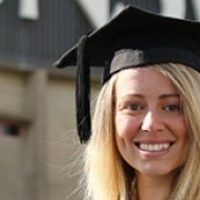
Lisa Thom
BE Civil with Architecture, 2013
Structural Engineer, Lend Lease Development
When Lisa Thom completed her Civil Engineering with Architecture degree at UNSW in 2013 she breathed a sigh of relief, but she certainly wasn’t prepared for the whirlwind of opportunities to come. Her undergraduate thesis, on the use of cross laminated timber (CLT) in building and construction, won her the School of Civil and Environmental Engineering prize for Civil with Architecture. It also caught the interest of the Timber industry of Australia who sponsored her to travel to the World Conference for Timber Engineering in Canada earlier this year.
As a direct result of her thesis, she received a call from a senior engineer at Lend Lease asking if she wanted to apply for a job in their development arm, working as a Structural Engineer on Timber Products – she agreed. Lend Lease’s interest in timber began during the planning phase of the Docklands area in Melbourne. The traditional heavy weight construction materials required expensive groundworks due to the soil conditions so Lend Lease engineers sought an alternative – timber.
Massive timber has been used successfully in construction for over 30 years across Europe. It is lighter, and its construction time is quicker. What’s more, it is environmentally, economically and socially sustainable – a natural product that comes from plantations, stores carbon and can be recycled at the end of its useful life. Lisa feels passionately that timber technology has limitless potential in this country. She was encouraged recently to present to the Institute of Structural Engineers in Melbourne about the benefits of using CLT in building - the presentation was very well received.
Using timber brings a whole new set of parameters to the initial project phase. The design needs to be nailed down much earlier in the process because of the prefabrication process. The design basics for timber differ so it is best if the developers commit to using timber right from the start which puts more pressure on the design team up front. However, this in turn can dramatically reduce risks (and additional cost) in the later stages of construction.
At present there are only two CLT buildings in Australia, both constructed by Lend Lease. But, once the local industry takes off, as Lisa is sure it will, she hopes to see more and more massive timber buildings in Australia.
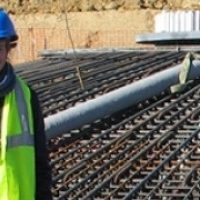
Stephanie May
BE Civil Hons Class 1/B Art 2012
Structural Engineer, CTE WIND Civil Engineering, Brittany France
CTE WIND is an engineering consulting firm specialized in the analysis and design of onshore wind turbine foundations.
I had no idea what “engineering” involved when I began my degree. However I enjoyed the sciences at school, and was drawn by the opportunity to creatively apply them to solve real-world problems.
When I was considering where to apply, I came across an article on how civil engineers from UNSW were volunteering in Cambodia for EWB (Engineers Without Borders). I have always been passionate about humanitarian issues, and civil engineering seemed to be a path through which I could contribute. For a somewhat impulsive choice, it’s been a perfect fit.
UNSW Australia has a reputation as being one of the best universities for engineering in the country. Not only are there extensive choices for different types of engineering, there is also an excellent range of combined degrees available. I decided to combine my Bachelor of Engineering with a Bachelor of Arts, so I could continue my studies in French.
Once I started my degree I became aware of the diversity available even within Civil Engineering at UNSW. I took courses in structural engineering, but also geotechnical engineering and water engineering. All of which I use on a daily basis in my job.
At the moment I’m working as a structural engineer in north-western France. I work for a company that specialises in the design of foundations for onshore wind turbines. We are involved in projects all over the world –my last project was for a wind farm in Samoa. I enjoy the technical aspect of the design phase, however it’s also exciting to get on site and see our designs constructed in reality.
And in my spare time, I volunteer with the EWB team in France designing various structures for projects in developing countries. Despite the obvious challenges, it’s rewarding knowing that I can contribute my technical knowledge to bring about sustainable change.
The highlight of my degree by far was doing an exchange to France. It was probably the most challenging aspect of my degree, both from a linguistic and an academic point of view, but I loved every moment of it. I met some of my closest friends while on exchange, and it had a huge influence on where I am today.
I highly recommend the exchange program. UNSW has partnerships with hundreds of universities around the world, so you can literally go anywhere you want to goMany people will tell you to get experience. I believe an exchange can be equally as enriching – and may just set you apart from the other candidates.
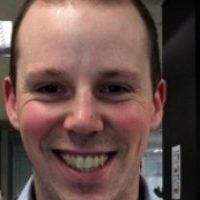
Steve Hare
BE Civil Engineering Hons/BCom 2011
Strategic Maintenance Planner, State Water Corporation
State Water Corporation is the organisation responsible for the maintenance and operation of 20 large dams and 280 weirs and regulators across regional NSW.
My job today: My current role is heading up a project that is responsible for identifying the most cost effective and efficient levels of maintenance to apply to our assets. This has involved travel to various sites -including Wyangala Dam near Cowra, Burrinjuck Dam near Yass, and Glennies Creek Dam near Singleton - to facilitate workshops with trade and engineering staff to apply a reliability centred
maintenance approach to maintenance planning.
Why I chose my degree: After several visits to interesting building sites while in High School, and hearing about the sorts of jobs civil engineers can work in, I was attracted to the degree. Advice to me was that many engineers often end up in management, and as such I decided to combine my Engineering degree with Commerce to give me some formal training in business related fields. I chose UNSW
because of its reputation, and I enjoyed the flexibility to take different subjects that interested me later in my degree. I also really appreciated the real world examples and assignments presented in classes. Learning how to interact and deal with people from a variety of different backgrounds was also one of the most important skills I learned while at University.
My advice to current or prospective students: I strongly encourage students with an interest in science and maths to take up engineering as a career. There is a huge variety of varied roles that are available to people with an engineering degree
such as managing multimillion dollar construction projects, to maintenance planning, to inspecting dams to ensure they are safe for day to day operation.
Engineering doesn't just limit you to technical roles as I have many friends who have gained roles in finance, banking, business consulting and management. Given the current resources boom and aging engineering workforce, there is currently huge demand for engineers and this is likely to continue for some time. The varied roles and high demand means that graduating engineers should have no trouble finding a rewarding and interesting career path to follow.
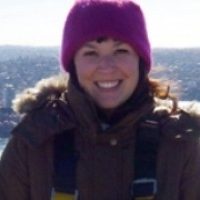
Tania Milinkovich
BE Civil Engineering with Architecture, 2011
Facade Engineer, Arup
Arup are an independent global and multidisciplinary firm of designers, planners, engineers, consultants and technical specialists offering a broad range of professional services.
My job today: At the moment, I am predominantly working as a façade access and maintenance consultant. This involves working closely with architects, clients and other engineers in the design phase to come up with strategies on how a new building façade will be accessed in order to carry out routine maintenance work. This can be quite a complex task which requires coordination with many different parties to work out spatial requirements, costs, safety, workability and structural adequacy to support the systems which must be installed. Most of the projects I am working on are very large scale buildings and developments around the world and working with some of the most well known
architects globally has been the most exciting part for me thus far.
How my degree benefitted me: I learnt all the technical skills and established my foundations as an engineer (excuse the pun!), but at the same time I was exposed to how architects are taught to think and ultimately come up with designs for buildings. I engaged with this process myself and learnt how the creative process happens. I am able to appreciate where an architect's design has come from and the reasoning behind it, and I feel that I can communicate and collaborate with architects more easily as well.
My advice to current or prospective students: To current students: My number one piece of advice is to really try to get out there and get some work experience as soon as possible in your degree. I found uni so much easier after I had gone out and seen how things are in the real world, just by going out on site and seeing how buildings are put together. Everything you learn at uni gets put into context after doing work experience and then it is
so much easier to approach problems at uni logically rather than just memorising a method and trying to re-apply it to new things in exams, which never works out!
To prospective students: As an engineer, the opportunity to do this degree is invaluable. Particularly if you think you would like to work as an engineer on building projects, this degree is for you. You will have the opportunity to learn all about the creative design process as well as the technical and problem solving skills you need to have as an engineer.
Conversely, be warned of the level of mathematics involved in engineering. I feel lucky that I was interested in both arty and creative things as well as the technical/problem solving side. It feels empowering to be a woman in an industry which is male dominated. I feel that people respect and admire you for doing it.
Personally this degree was a huge challenge for me and there were times where I questioned my decision to do it, but looking back now I don't think I would have done anything else!
